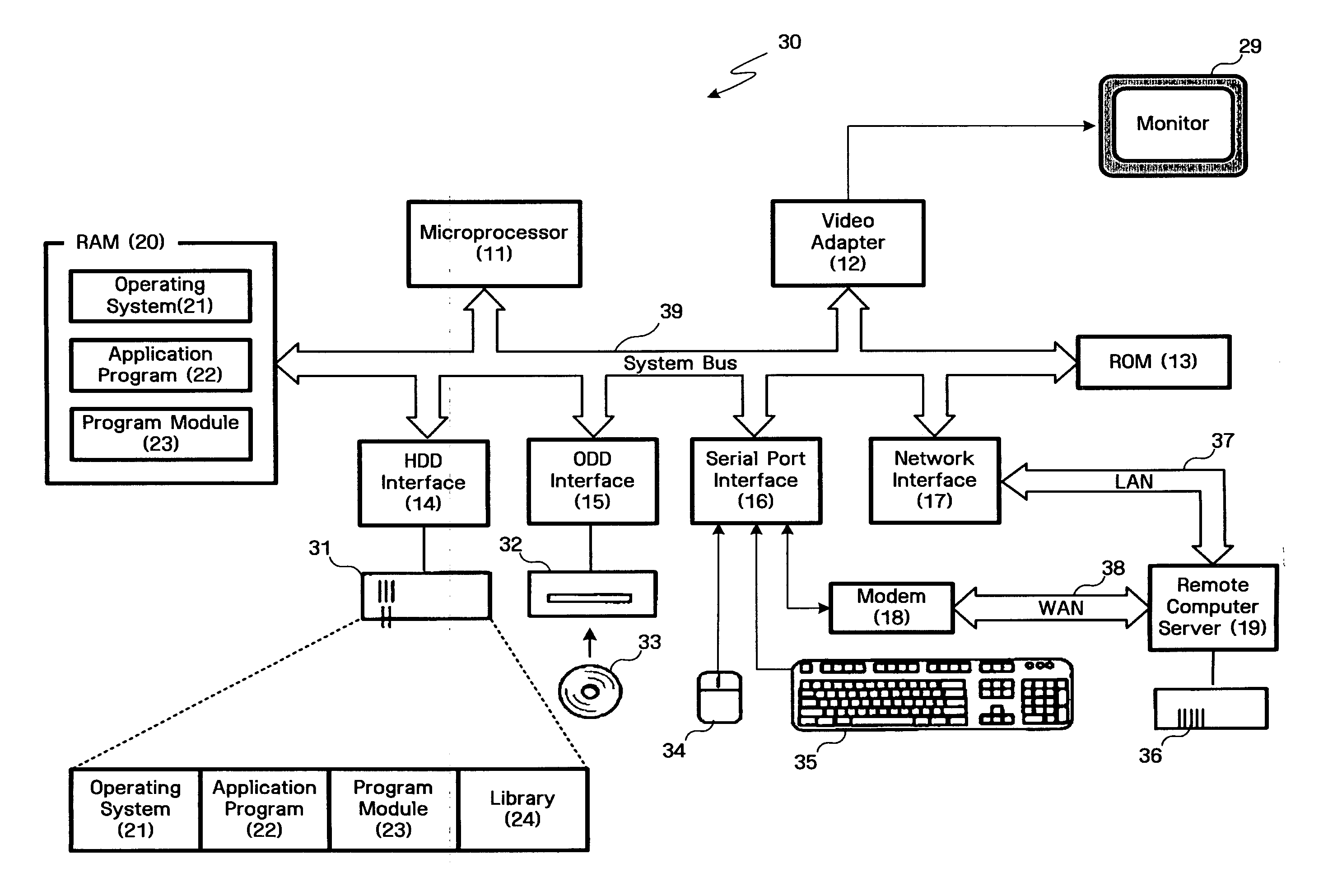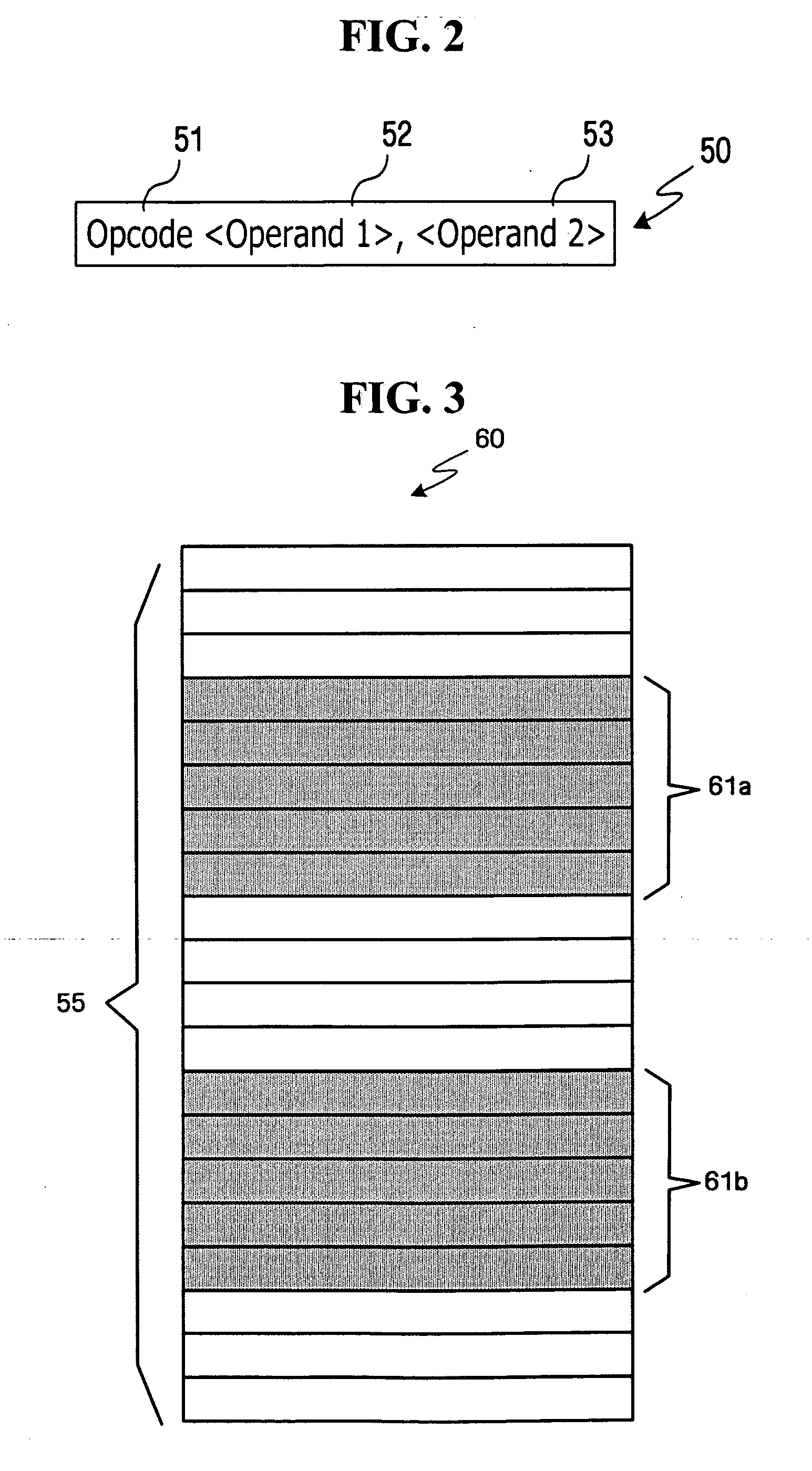Method for reducing code size of program in code memory
a technology of code memory and code size, applied in the computer system, can solve the problems of increasing manufacturing cost, reducing the code size of programs, and requiring a relatively higher manufacturing cost in memory, so as to and reduce the size of programs
- Summary
- Abstract
- Description
- Claims
- Application Information
AI Technical Summary
Benefits of technology
Problems solved by technology
Method used
Image
Examples
exemplary embodiment 1
[0051]FIG. 4 is a view showing a structure of a code memory 70 according to a first exemplary embodiment of the present invention. Different from the code memory 60 shown in FIG. 3, the code memory 70 shown in FIG. 4 has a compacted structure having no iterative instruction sets. In particular, the first instruction set 61a shown in FIG. 3 is removed and an “Echo” instruction 71 is added thereto. In addition, an original instruction located next to the second instruction set 61b is replaced with a predetermined instruction 72, and the predetermined instruction 72 is again replaced with the original instruction later.
[0052] The instruction 71“Echo , ” is located at the fourth position of the code memory 70, that is, the first position of the instruction set 61a shown in FIG. 3. The microprocessor 11 cannot recognize the “Echo” instruction 71. For this reason, an error may occur when executing the “Echo” instruction 71 caused by an undefined instruction, so that an exception handling...
exemplary embodiment 2
[0060]FIG. 5 is a view showing a structure of a code memory 80 according to a second exemplary embodiment of the present invention. Different from the first exemplary embodiment of the present invention in which the additional cost may occur because several cycles are added to the control flow of the microprocessor 11 due to the exception handling process, the second exemplary embodiment of the present invention may not cause the additional cost by removing the exception handling process.
[0061] As shown in FIG. 5, although the error may occur when the microprocessor 11 executes the Echo instruction 71, the microprocessor 11 executes a “Branch” instruction 81 without performing the exception handling procedure. The “Branch” instruction 81 represents the branch to the first system function, which has been previously defined.
[0062] The first system function is defined in such a manner that the first system function can perform the procedure similar to the exception handling procedure...
exemplary embodiment 3
[0066]FIG. 6 is a view showing a structure of a code memory 90 according to a third exemplary embodiment of the present invention. As shown in FIG. 6, the third exemplary embodiment of the present invention is partially modified from the first and second exemplary embodiments of the present invention. According to the third exemplary embodiment of the present invention, the branch instructions may not be modified by an exception handling unit of the operating system 21 or a system function, which has been previously defined. Instead, the instructions to be executed are stored in a temporary buffer 99 provided in the code memory 90 and then the instructions are executed after changing the addresses of the instructions corresponding to the positions of the instructions in the temporary buffer 99. The third exemplary embodiment of the present invention may be efficiently used when the original program includes a memory, such as the ROM 13, which cannot be corrected during execution.
[0...
PUM
 Login to View More
Login to View More Abstract
Description
Claims
Application Information
 Login to View More
Login to View More - R&D
- Intellectual Property
- Life Sciences
- Materials
- Tech Scout
- Unparalleled Data Quality
- Higher Quality Content
- 60% Fewer Hallucinations
Browse by: Latest US Patents, China's latest patents, Technical Efficacy Thesaurus, Application Domain, Technology Topic, Popular Technical Reports.
© 2025 PatSnap. All rights reserved.Legal|Privacy policy|Modern Slavery Act Transparency Statement|Sitemap|About US| Contact US: help@patsnap.com



